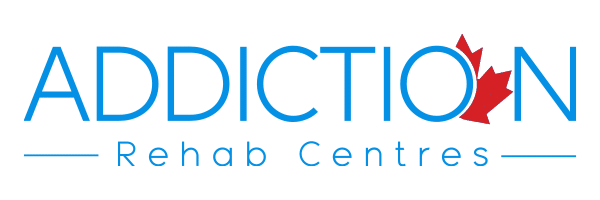Chronic Pain Treatment for People Addicted to Painkillers
Many individuals today experience the ill effects of extreme agony, meaning they are experiencing pain on a regular basis. Some endure daily, while others may have different conditions, such as nerve pain, that flare up depending on the person’s stress level. For those suffering from chronic pain, it can be very difficult to find a compelling & effective treatment, and this only gets harder if the patient happens to have a history of addiction to opioid pain medications.
Addiction treatment for opioid abuse or dependence on illegal drugs that relieve pain can be very challenging. The patient may have to undergo detox with the help of Naltrexone or methadone in order to manage the withdrawal symptoms. Once the opioid medication is out of the patient’s system it is not over, alternative pain management techniques have to be explored in order to minimize the risk of relapse. For this reason, chronic pain patients who have a history of medication addiction are reluctant to take any traditional painkillers. They fear that a return to prescription drugs could trigger a return to psychological or physical dependence. This is when alternative pain management might come into play, as it is a great way to relieve pain and improve quality of life without the use of fentanyl, morphine, or other prescription opioid medications.
The chronic pain patient should consult with a primary care physician to discuss which non-opioid alternative medications are good for him/her, such as ibuprofen (Advil or Motrin) or acetaminophen (Tylenol), and also should he/she discuss alternative pain management tools, techniques and resources. In most cases, these methods can be accessed without a referral.
Alternative Medical Care
Traditional Chinese Medicine
Traditional Chinese Medicine (TCM) is an alternative therapy that has been practiced for thousands of years, and more recently it has been recognized as an alternative to Western medicine. Many provinces in Canada have recognized this therapy and this means a lot of private health insurance companies now allow people to claim for their treatments, which makes this type of therapy more affordable. For those suffering from chronic pain and who wish to avoid medications, TCM offers a variety of treatments that may be helpful.
- Acupuncture: This treatment consists of needles being placed in the body along specific energy lines that match up different organs or parts of the body. The treatments tend to be around 30 minutes in length and can offer pain relief to specific areas of the body.
- Teas: TCM uses a lot of teas and tinctures to help the body heal itself, which can be very helpful when battling chronic conditions. The TCM practitioner will prescribe certain herbs that should be combined with hot or cold teas and taken at specific times of the day.
- Body treatments: these can include modalities such as physical therapy or cupping, which are used to help relax the patient and relieve tension found in the body. Cupping is a technique in which the practitioner will place heated cups on the body, creating a suctioning effect and thereby releasing tension in the muscles.
These are just some of the modalities seen in TCM, and all of them can be used for pain treatment. It is important to note that if you are seeking TCM to treat a condition relating to pain, an accurate health history will be needed along with an initial assessment.
Naturopathic Doctors
They are one of the most common recommendations given to a new patient seeking pain treatment. These practitioners have at least four years of training in a wide variety of modalities. Similar to TCM, a naturopathic doctor (ND or naturopath) will take a thorough health history, looking at the patient’s overall wellness, before tackling the specific issue they came in with. The ND will then create a treatment plan specific to the patient, and like traditional medical doctors, will require follow-up visits. Naturopaths are also able to prescribe certain natural medications that would help with particular conditions without interfering with the patient’s recovery. Naturopathic doctors also use a wide range of modalities and remedies, including acupuncture, that can help the patient heal more naturally. As stated above, acupuncture is a great way of treating specific body parts and can be used to release tension in the muscles, helping reduce pain.
Health Care Practitioners for Joint and Muscle Pain
Within the realm of severe pain, one of the main issues can be pain in the joints and muscles. This type of pain can be chronic due to repetitive physical activities that are part of the patient’s everyday life, or as a result of postural issues. Regardless of the cause of chronic pain, there is a plethora of alternative treatments that can help without the use of opioid pain medication.
Massage Therapy
In most Canadian provinces, massage therapists are registered healthcare practitioners, and their services can be covered by private health insurance. Massage therapy can help both the body and the mind, as it helps relieve pain in the muscles while also allowing the patient to relax. A massage therapist will work with the patient on treatment goals and can either focus on a particular part of the body, or the overall relaxation of the client. If someone is suffering from chronic physical pain, this form of physical therapy can be a vital part of their overall healthcare plan, especially if they are trying to avoid pain medication. Massage therapy can also be a great adjunct treatment for people suffering from stress-related health issues, and it can help those with more generalized pain issues such as fibromyalgia. This is a condition in which the patient feels pain throughout the body without having experienced any injury, surgery or illness that would explain said pain. This type of condition can be very difficult to treat, and if the patient is unable to take pain medication due to addiction issues, it can take a long time to find the right combination of appropriate treatments. Whether massage therapy is a successful treatment for conditions like fibromyalgia because it releases muscle tension, or because it simply allows the patient to relax, is unknown. However, because it has been shown to help with chronic pain syndromes such as this, it can be a great alternative to pain medication for those with a history of addiction.
Chiropractic Medicine
Chiropractors have also regulated health practitioners who treat both acute and chronic pain in the body. A chiropractor will take a long time to assess the patient’s body, how they move and what causes them pain, before coming up with a plan for the treatment of chronic pain. Though a lot of people only see chiropractors when they feel pain, it should be noted that they can also help with the management of chronic back pain and other pain conditions. By having regular chiropractic appointments, patients are able to ensure that their joints function properly, which, over a period of time, can relieve recurring pain due to such things as bad posture. For people who suffer from chronic body pain conditions, chiropractic medicine can help alleviate tension felt in the body as well as address postural issues that might be causing the sensations of pain.
Osteopathy
Holistic health care practitioners work on the joints and muscles, but treatment is focused on how the body works as a whole. An osteopath will look at a person’s overall health before creating a treatment plan for a variety of chronic pain conditions, such as arthritis, back pain, headaches and tennis elbow. During the treatment, the osteopath will manipulate particular body parts with the goal of improving circulation as well as nervous system and lymphatic system functions. When treated together, these systems can improve overall health and decrease pain. Osteopathy is not as well established in Canada as it is in the United States, but the rise of interest in this health modality has allowed the profession to gain recognition in many areas of Canada. Osteopathy can be tremendously helpful when dealing with chronic pain and should be looked at as an alternative to medicine when worried about drug abuse or addiction.
Physiotherapist
A physiotherapist can be a valuable resource for people who are trying to manage both chronic and acute pain without the use of medication. The physiotherapist will take a detailed health history and will come up with a treatment plan that suits the patient’s needs and lifestyle. One of the main things physiotherapists do is educate their clients on ways in which they can improve their physical health through movement and exercise. The physiotherapist will teach the patient about the specific exercises that can help alleviate their condition, and show them how to do each exercise in a safe manner. When dealing with chronic pain conditions, a physiotherapist can help the patient identify practical ways in which they can manage their pain, for example, by prescribing custom orthotics or by teaching them how to properly use a cane. These physical therapy methods can help people better understand how their bodies function, which leads to a healthier, less painful lifestyle. By including physiotherapy in a patient’s health care plan, chronic pain can be avoided or reduced.
Energy Therapies
For people living with chronic pain, every day will be a struggle. It is not always easy to manage, and when trying alternative health care, it opens the door to other less mainstream methods of healing. In many healing traditions, there is the idea that our bodies are made up of energy, and when there is an imbalance of energy, the body suffers. These ideas date back thousands of years, and some people swear by the healing powers of what can be classified as energy therapies. Energy therapies can be very successful when used in combination with other more mainstream practices and should be considered when treating chronic pain without the use of addictive drugs.
Meditation
Though meditation would not be considered a formal method for the treatment of chronic pain, the therapeutic benefits of meditation have been proven. In very basic terms, meditation is the practice of sitting quietly while paying attention to your breathing, with the goal of clearing the mind of thought. Meditation can allow the body and mind to relax, which in turn can often relieve pain. There are many avenues in which someone can learn meditation, one of the best being guided meditation from an experienced teacher. Meditation has been proven to help with such things as sleep, which can be a major issue for those suffering from chronic pain. By relaxing the mind, it becomes easier to relax the body and thus fall asleep. The use of meditation by those suffering from neuropathic pain, cancer pain, or pain from swelling or other conditions, can be a great addition to more traditional healthcare practices.
Reiki
It has been practiced for thousands of years and uses energy to heal the body. The practitioner will place their hands near or on the body of the patient, releasing bad energy and replacing it with good energy. During a reiki session, the body and mind are able to relax, which can facilitate healing. Though the practitioners are not working directly on the area of pain, the idea is that if you have more balanced energies, your body will be able to heal itself. This type of healing can have an amazing effect on the body and can be looked at by patients with chronic pain as an alternative to taking pain medication.
Aromatherapy
Aromatherapy refers to the use of different essential oils that promote healing. Essential oils are derived from plants and have been used by many different cultures for thousands of years. There are three main ways in which people can use essential oils: topically, internally and aromatically. When used aromatically, the essential oil is diffused into the room, which can stimulate different processes in the body and create healing. The idea here is that the body has the ability to heal itself, and different aromas will create different healing energies in the body. One of the best-known examples of this is the use of lavender for a calming effect, allowing the patient to relax, which then in turn enables the body to heal itself. When used for patients with chronic pain, aromatherapy can be a great addition to more traditional healthcare practices as it may help them avoid the misuse of painkillers.
Final Thoughts
Whether it be non-conventional healing methods, non-opioid medications, or healthcare practices, there are a lot of treatment alternatives for opioid addicts suffering from chronic pain. No matter what type of medical history a person has, chronic pain can be one of the most difficult things to treat, and looking at alternative health care can be helpful for anyone. Not only are there a lot of options within the healthcare community, but there are also a lot of healing traditions that can help manage some of the symptoms of chronic pain. New patients with a history of opioid abuse should work with a primary care physician to explore all options when trying to avoid pain medication, and perhaps to try a combination of modalities to find the best fit.







